Visual Voyages: Images of Latin American Nature from Columbus to Darwin
























José María Carbonell, Loranthus, Royal Botanical Expedition to the New Kingdom of Granada led by José Celestino Mutis (1783–1816), tempera on paper, approx. 21¼ × 15 in. Archivo del Real Jardín Botánico- CSIC (Madrid).
Le vrais Bresil es province du Quito (The true Brazil, a province of Quito), in Vallard Atlas, Dieppe (France), 1547, tempera, gold paint, gold leaf, and black ink on parchment, 14 ½ × 18 ¾ in. The Huntington Library, Art Collections and Botanical Gardens.
José María Velasco (1840–1912), Valle de México (The Valley of Mexico), 1877, oil on canvas, 63 3/16 × 90 7/16 in. Museo Nacional de Arte, INBA, Mexico City, SIGROPAM 24433. Reproduction authorized by the National Institute of Fine Arts and Literature, 2016.
Frederic Edwin Church (1826–1900), Chimborazo, 1864, oil on canvas, 48 × 84 in. The Huntington Library, Art Collections, and Botanical Gardens, gift of the Virginia Steele Scott Foundation. © Fredrik Nilsen photography.
Albert Eckhout (ca. 1610–1666), Fruits, pineapple and melon, etc., 1640–50, oil on canvas, 35 13/16 × 35 13/16 in. Photo: John Lee, National Museum of Denmark, Copenhagen, N.92.
Feathered cape, Tupinambá people, Brazil, 17th century, feathers and vegetable fibers, 70 ¾ × 59 × 39 ⅓ in. Musées Royaux d'Art et d'Histoire, Brussels, AAM 5783, © RMAH.
Nopal planta que se cría en la América y que produce la grana (The nopal plant that is grown in America and produces cochineal), in Reports on the History, Organization, and Status of Various Catholic Dioceses of New Spain and Peru, 1620–49, pigment and ink on paper. The Newberry Library, Chicago, Ayer MS 1106 D8 Vault Box 1 Folder 15.
Le Chimborazo, vu depuis le plateau de Tapia (Chimborazo Seen from the Tapia Plateau) in Alexander von Humboldt (1769–1859), Vues des cordillères, et monuments des peuples indigènes de l'Amérique, (View of the cordilleras and monuments of the indigenous peoples of the Americas), Paris: F. Schoell, 1810–13, color aquatint, mezzotint, engraving, and etching with watercolor, 20 × 27 in. The Huntington Library, Art Collections and Botanical Gardens.
Antonio García Cubas (1832–1912), agricultural map in Atlas pintoresco é historico de los Estados Unidos Mexicanos, (Picturesque and historical atlas of the United States of Mexico), Mexico City: Debray Sucesores, 1885, chromolithograph, 24 13/16 × 30 11/16 in. The Newberry Library, Chicago, Ayer 655.59.G2.
Bernardino de Sahagún (1499–1590) and indigenous artists and scribes, description and illustration of Mexican medicinal herbs in the Historia General de las Cosas de la Nueva España, (General History of the Things of New Spain), also known as the Florentine Codex, ca. 1577, ink and color on paper, Biblioteca Medicea Laurenziana, Florence Ms. Med. Laur. Palat. 220. Reproduced with permission of MiBACT.
Vicente Albán, Yapanga from Quito, Quito (Ecuador), 1783, oil on canvas, 31 ½ × 42 15/16 in. Museo de América, Madrid, 00074.
Intermediate Stages of Blooming, in John Fisk Allen (1785–1865), Victoria regia; or, The Great Water Lily of America, Boston: Dutton and Wentworth, 1854, chromolithograph, 15 × 21 in. The Huntington Library, Art Collections and Botanical Gardens.

Sept. 16, 2017–Jan. 8, 2018
Boone Gallery
As part of the Getty’s Pacific Standard Time: LA/LA initiative, The Huntington will present an extensive exhibition surveying the connections among art, science, and the environment in Latin America, from the voyages of Columbus to the publications of Charles Darwin in the mid-19th century. “Visual Voyages" will introduce audiences to new understandings of Latin American nature from a range of cultural perspectives: as a wondrous earthly paradise; as a new source of profitable commodities such as chocolate, tobacco, and cochineal; as a landscape of good and evil, as viewed through the filter of religion; as the site for an Enlightenment project of collecting and classifying; and, in the 19th century, as the reflection of a national spirit. Visual Voyages features more than 150 paintings, rare books, illustrated manuscripts, prints, and drawings from The Huntington’s holdings as well as from dozens of other collections. Many of these works will be on view for the first time in the United States. Importantly, the exhibition and its catalog will bring together Latin American and European depictions of Latin American nature.
 Exhibition Catalog
Exhibition Catalog
“Visual Voyages: Images of Latin American Nature from Columbus to Darwin” is accompanied by a hardcover book of the same title written by Daniela Bleichmar, co-curator of the exhibition. In a narrative addressed to general audiences as well as students and scholars, Bleichmar reveals the fascinating story of the interrelationship of art and science in Latin America and Europe during the period. Published by Yale University Press in association with The Huntington, the 240-page book contains 153 color illustrations. $50.00. Available beginning in September 2017 at the Huntington Store.
Related Exhibitions
The Huntington will present an array of public programs to complement “Visual Voyages,” including a lecture, a curator tour, and focused exhibitions.
 Human Nature: Sonic Botany
Human Nature: Sonic Botany
Sept 16, 2017–Jan 8, 2018
Virginia Steele Scott Galleries of American Art
Guillermo Galindo (b. 1960, Mexico City) uses composed and performed music, printed scores, and assembled instruments to investigate the politics of the human. Curator Josh Kun commissioned this new work as part of Pacific Standard Time: LA/LA in conjunction with the exhibition Visual Voyages: Images of Latin American Nature from Columbus to Darwin, on view in the Boone Gallery. Galindo combines graphic scores and ambient sounds to comment on the indigenous codices included in Visual Voyages.
Visual Voyages in the Gardens
Sept 16, 2017–Jan 8, 2018
Throughout the Botanical Gardens
Visitors can enrich their experience of “Visual Voyages” by strolling the botanical gardens in search of the real-life specimens of plants they have seen depicted in the gallery. Keep your eyes peeled for two dozen “Visual Voyages” signs, pointing to cacao, pineapple, tobacco, and other plants indigenous to Latin America.
 Nuestro Mundo
Nuestro Mundo
Sept. 16, 2017–Jan. 8, 2018, weekends only
Flora-Legium Gallery, Brody Botanical Center
The two dozen paintings in this installation are the work of young adults ages 18 to 26 who are mentored by Art Division, a nonprofit organization that provides training and support for Los Angeles youth from underserved communities pursuing careers in the visual arts. The students used “Visual Voyages” as inspiration.
 In Pursuit of Flora: 18th-Century: Botanical Drawings from The Huntington’s Art Collections
In Pursuit of Flora: 18th-Century: Botanical Drawings from The Huntington’s Art Collections
Oct. 28, 2017–Feb. 19, 2018
Huntington Art Gallery, Works on Paper Room
European exploration of other lands during the so-called Age of Discovery revealed a vast new world of plant life that required description, cataloging, and recording. By the 18th century, the practice of botanical illustration had become an essential tool in the study of natural history. From lusciously detailed drawings of fruit and flowers by Georg Dionysius Ehret (1708–1770), a collaborator of Swedish botanist Carl Linnaeus, to depictions of more exotic examples by Matilda Conyers (1753–1803), “In Pursuit of Flora” reveals 18th-century European appreciation for the beauty of the natural world.
Related Programs
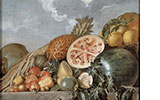 Taste of Art: Visual Voyages through Latin America
Taste of Art: Visual Voyages through Latin America
Sept. 30 or Oct. 7 (Saturday)
9 a.m.–12:30 p.m.
Explore connections among art, science, and the environment in the exhibition, then head to the kitchen to prepare a Latin American-inspired meal. Maite Gomez-Rejón of ArtBites leads the workshop. Members: $85. Non-Members: $100.
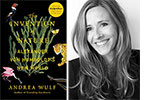 Talk and Book Signing: The Invention of Nature: Alexander von Humboldt’s New World
Talk and Book Signing: The Invention of Nature: Alexander von Humboldt’s New World
Oct. 15 (Sunday) 2:30 p.m.
Rothenberg Hall
Join best-selling author Andrea Wulf for a talk about the life of explorer, scientist, and early environmentalist Alexander von Humboldt (1769–1859), the subject of her most recent book, The Invention of Nature. Her talk will focus on Humboldt’s explorations of Latin America. Free; no reservations required.
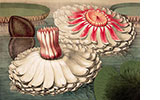 Wark Lecture
Wark Lecture
Seeing and Knowing: Visions of Latin American Nature, ca.1492–1859
Oct. 16 (Monday) 7:30 p.m.
Rothenberg Hall
Historian Daniela Bleichmar, co-curator of the exhibition, discusses the surprising and little-known story of the pivotal role that Latin America played in the pursuit of science and art during the first global era. A book signing and coffee reception will follow the talk. Free; no reservations required.
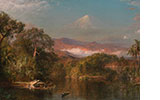 Curator Tour: Visual Voyages
Curator Tour: Visual Voyages
Oct. 18 (Wednesday) 5-6 p.m.
Join exhibition co-curator Daniela Bleichmar for a private tour of “Visual Voyages.” Members: $15. Non-Members: $20.
 Guillermo Galindo Performance
Guillermo Galindo Performance
Human Nature: Sonic Botany
Nov. 4 (Saturday), noon - 1 p.m.
Rose Hills Garden Court
Experimental composer, sonic architect, and performance artist Guillermo Galindo presents a work inspired by “Visual Voyages” with guest artist Amber Stucke. The program is part of USC Annenberg’s Musical Interventions, a series of public events organized for Pacific Standard Time: LA/LA by Josh Kun, historian of popular music and recently named a MacArthur Fellow. Free with admission.
Conference at the Getty Center
Indigenous Knowledge and the Making of Colonial Latin America
Dec. 8–10, 2017
This symposium will bring together an interdisciplinary group of scholars to explore the role of indigenous knowledge in the making of colonial Latin America. Curator-led visits to two related exhibitions—“Visual Voyages” at The Huntington and “Golden Kingdoms: Luxury and Legacy in the Ancient Americas” at The Getty—will allow participants to view examples of work by indigenous artists and authors, including several rare pictorial manuscripts (codices). The symposium is organized by Daniela Bleichmar, co-curator of “Visual Voyages” and Kim Richter, co-curator of “Golden Kingdoms” and senior research specialist at the Getty Research Institute, with funding from the USC-Huntington Early Modern Studies Institute, the Seaver Institute, and the Getty Research Institute. For registration and more information, visit getty.edu.
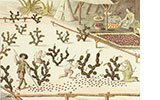 Lecture
Lecture
Cochineal in the History of Art and Global Trade
Dec. 10 (Sunday) 2:30 p.m.
Rothenberg Hall
Alejandro de Ávila Blomberg of the Oaxaca Ethnobotanical Garden and Oaxaca Textile Museum will explore the historical and cultural significance of this natural crimson dye. Used from antiquity, cochineal became Mexico’s second-most valued export after silver during the Spanish colonial period. Free; no reservations required.
Major support for this exhibition is provided through grants from the Getty Foundation.
Generous support is provided by Scott Jordan, Sharon and John Light, and in part by an award from the National Endowment for the Arts. Additional funding is provided by Laura and Carlton Seaver, The Gladys Krieble Delmas Foundation, The Ahmanson Foundation Exhibition and Education Endowment, and The Melvin R. Seiden-Janine Luke Exhibition Fund in memory of Robert F. Erburu.
Paint for this exhibition is provided by Farrow & Ball.
Exhibition design is provided by Chu + Gooding Architects with Katherine Kwan Design.